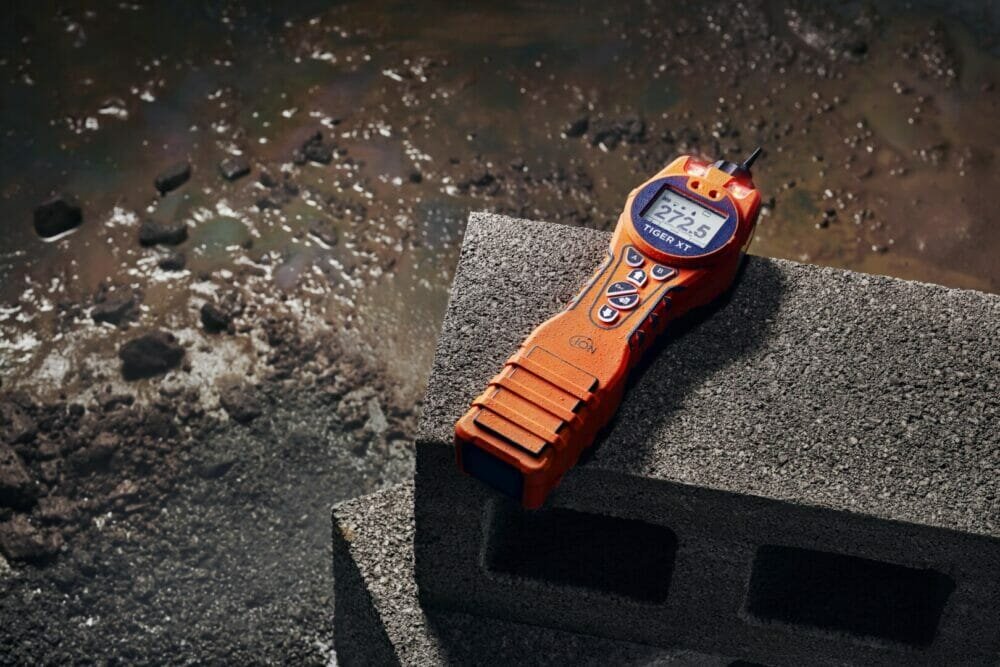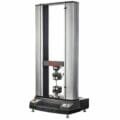Portable photoionization detectors (PIDs) have become an important tool in the management of many contaminated land remediation projects, and the following article will explain the reasons behind their popularity, despite the challenges presented by field work. Remediation sites frequently present soil samples with high levels of humidity, which interferes with the readings from many PIDs, so this article will also explain how the Ion Science PID instruments have completely eliminated this issue.
Background
Land is defined as contaminated when it is polluted by substances that cause, or may cause, significant harm to people, property, protected species, surface waters or groundwater. Most pollution is caused by existing or historical human activities such as industrial processes and mining, poor waste management, unsustainable farming practices, accidents, spills, leaks and the effects of armed conflicts. Pollution also knows no borders, with contaminants spreading atmospherically and through terrestrial and aquatic ecosystems.
Typical contaminants include heavy metals, asbestos, radioactive substances, oils, fuels, tars, chemicals such as solvents, and a wide range of gases. Many thousands of different contaminants therefore exist, and sophisticated laboratory analytical techniques can be used to quantify sample concentrations. However, laboratory testing is costly and incurs a significant delay, so it is common practice to deploy field-use screening devices to speed up the process of contamination assessment, and to reduce the number and cost of samples requiring laboratory analysis. It is usually necessary for field testing to be supported by confirmatory sampling and laboratory analysis.
Field-use screening tools help to identify contaminated areas quickly and cost-effectively. For example, portable XRF analysers enable rapid measurement of several metals, and PID instruments can detect hundreds of volatile organic compounds (VOCs). The ION Science Tiger XT, for example, has an internal gas table for over 700 gases, with response factors for each – for further information, download the ION Science Response Factor datasheets from IONScience.com.
Hydrocarbon contamination
Hydrocarbon contamination is frequently encountered in site investigations at brownfield sites, where elevated concentrations of oil and petroleum hydrocarbons in soil and groundwater systems present a risk to human health and the environment. Hydrocarbon contamination is therefore one of the most common forms of pollution, which explains why portable photoionization detectors (PIDs) are the most commonly employed tool in the screening and characterisation of potentially contaminated sites.
The more significant groups of hydrocarbons that are either indicative of oil-based pollution or represent a significant human health or environmental hazard are BTEX (benzene, toluene, ethylbenzene and xylenes) and PAHs (polycyclic aromatic hydrocarbons).
Portable PIDs can be used to test the air surrounding a potentially contaminated sample, or the sample of water or soil may be contained within a tube, jar or sample bag so that the VOCs are allowed to volatilise and accumulate. The PID can then be used to test the headspace inside the sample container. This is a useful test for water samples that may have been contaminated by leaking underground storage tanks for example. VOCs such as methyl tertiary-butyl ether (MTBE) are highly soluble in water, and are therefore extremely mobile and capable of contaminating large volumes of water such as aquifers. Odour may be detected from water contaminated by hydrocarbons, but subjective assessments such as these should be verified by PID measurements. Early identification is therefore vital because remediation of underground water resources can be problematic and costly.
Why use portable PIDs?
Portable PIDs are commonly deployed at every stage of a contaminated land project. This includes preliminary risk assessments involving site visits to define project objectives, and to identify sources, pathways, receptors and pollutant linkages. Portable PIDs are also used during subsequent site investigations to undertake risk assessments using site specific data, and to refine the conceptual model.
Once onsite work is underway, the operators of machinery, such as diggers and remediation equipment, need to know whether a sample is contaminated or not. A precise analytical measurement is frequently not required for ongoing operational purposes. All that is necessary is a fast indication of whether significant levels of VOCs are present, so that the operator can make an informed decision, such as where to excavate. Similarly, a fast indication of contamination is necessary when onsite remediation is undertaken – for samples both before and after treatment.
It is important to emphasise that portable PIDs do not replace laboratory analysis; they complement such work and help to mitigate the cost, delays and labour involved with the analysis of collected samples. It is also important to note that the collection and transport of samples for VOC analysis in a laboratory involves stringent procedures to ensure that VOC levels do not dissipate before analysis. Nevertheless, analysis in a suitably accredited laboratory is necessary for a prescribed number of samples to demonstrate that a site is complying with its licence.
Portable PIDs are also employed to test the headspace of soil probes that are sometimes deployed for site characterisation and to check the ongoing effectiveness of remediation.

A variety of alternative methods, test kits and instruments exist for the onsite measurement of VOCs, but most of these are either costly, cumbersome, not portable, time-consuming, or too specific in their target species. Flame ionization detectors (FIDs) are also responsive to a wide variety of VOCs, including alkanes, but this includes methane (PIDs do not respond to methane) which is often present in soil for reasons unrelated to contamination. Also, FIDs require an ignition source such as hydrogen, which makes them less well suited to field work.
The main advantages of portable PIDs are:
- Fast response
- Sensitive to hundreds of VOCs including BTEX and PAHs
- Highly sensitive. With a broad range
- Relatively low cost
- Simple to use by untrained staff
- Battery powered and portable
- Different lamps available to target specific groups of compounds
Underlining the importance of PIDs in the measurement of hydrocarbons, CONCAWE, an environmental research group comprising many of the world’s leading oil companies, published a report in 2021 entitled ‘Overview of Field-Based Analytical Techniques, Devices and Kits to Determine Petroleum Hydrocarbons in Soil’. The report concluded: “It is important to acknowledge that there is currently not a single field analytical technology that allows to determine and quantify the entire range of petroleum hydrocarbons in soil and therefore a combination of analytical technologies (i.e., combining PID with vis-NIR or GC-MS with vis-NIR) has the potential to offer a more robust approach in quantifying petroleum hydrocarbons in soil by providing greater prediction accuracy.”
PIDs are also employed during emergency response situations that arise when land contamination occurs from a leak or spill of hydrocarbons. For example, the USEPA has an established set of emergency response procedures to investigate a site, evaluate the threat, and determine the best course of action. For example, the choice of PPE is informed by the identification of hazards or suspected hazards, the potential exposure pathways, and the performance of equipment providing a barrier to these hazards. An important goal of monitoring during initial site entry is to establish safety zones at the site. Periodic monitoring is then conducted to ensure that any new hazards are identified promptly, and that appropriate controls are implemented to protect the responders and nearby communities.
Why use ION Science PIDs?
Portable PID instruments such as the ION Science Tiger XT have been designed specifically for challenging field conditions. These rugged instruments benefit from the advanced features of the MiniPID 2 sensors, such as detection limits down to 1 ppb, and measurement ranges up to 20,000 ppm. Crucially however, the Tiger XT range is unaffected by the problems that plague other PID instruments. This is because a unique design eliminates any potential effects of varying humidity and contamination, and a built-in ASIC chip constantly checks PID performance to deliver a fail-safe instrument, which is essential in potentially hazardous applications.
In addition to the health risks posed by VOCs, their accumulation in contaminated land can represent an explosion risk, so the ION Science portable PIDS benefit from global Intrinsic Safety (IS) certification for use in potentially explosive atmospheres.
The Tiger XT is supplied as standard with a 10.6 eV lamp for the measurement of a wide range of VOCs. However, benzene is a particularly toxic VOC, and some site conditions set specific targets for this compound. Importantly, the new Tiger XT Select (XTS) utilises the ION Science 10.0 eV lamp to detect Total Aromatic Compounds (TACs) such as benzene, toluene and xylene, and is supplied with a pack of pre-filter tubes for the specific, selective detection of benzene. This speciation capability for benzene is a major advantage, given the complexity and cost of alternative benzene-specific measurement techniques.
Eliminating humidity interference
For decades, the users of portable PID instruments have endured unreliable measurements from their instruments due to the high levels of humidity that often exist on-site and in the headspace of soil samples. This has been the source of enormous frustration, but the wide-ranging response and the sensitivity of PIDs has made them an important tool in site investigation and sample screening work.
A number of ‘work around solutions’ have been developed involving humidity suppression or compensation, but all of these have significant limitations:
- Humidity sensor – these typically have a slower response than the PID sensor itself which causes a drifting compensation
- Desiccant tube – these both slow and reduce the PID response, plus they need replacing from time to time which adds cost
- Humidify the calibration gas – this only works at one level of humidity and is no longer accurate when the humidity changes
Importantly, none of these ‘solutions’ solves false positive readings at high humidity levels. ION Science has therefore developed a patent protected solution to high humidity, involving the addition of a third fence electrode within the PID sensor. This overcomes the possibility of incorrect high readings by acting as a conductive break, and thereby preventing excessive current flow caused by the presence of high, and even condensing, levels of humidity.
Summary
In the many locations with hydrocarbon contamination, portable PIDs offer environmental consultants, engineering contractors, regulators and remediation companies the opportunity to quickly assess large numbers of samples and locations. These measurements are not used to demonstrate compliance with licence conditions, but they are essential for operational purposes; enabling rapid, low-cost risk assessments and enabling effective, informed, decision making during the remediation process.
In the Tiger XT, users have a device that is truly fit for purpose; rugged, portable and sensitive to an enormous range of VOCs, but also resistant to the contamination and humidity issues that affect other manufacturers.







